 W
WColonel Thomas Blood was an Anglo-Irish officer and self-styled colonel best known for his attempt to steal the Crown Jewels of England and Scotland from the Tower of London in 1671. Described in an American source as a "noted bravo and desperado," he was known for his attempt to kidnap and, later, to kill, his enemy, James Butler, 1st Duke of Ormond.
 W
WGeorge Browne, Count von Browne in the nobility of the Holy Roman Empire, was an Irish soldier of fortune who became full general in the Russian service.
 W
WWilliam Cadogan, 1st Earl Cadogan, was an Irish-born British army officer whose active military service began during the Williamite War in Ireland in 1689 and ended with the suppression of the 1715 Jacobite Rebellion. A close associate and confidante of the Duke of Marlborough, he was also a diplomat and Whig politician who sat in the English and British House of Commons from 1705 until 1716 when he was raised to the peerage.
 W
WColonel Thomas Cass founded and was commander of the 9th Regiment Massachusetts Volunteer Infantry of the Union Army, which saw extensive service in the American Civil War. Cass was wounded at the Battle of Malvern Hill and died shortly after from his wounds in Boston, Massachusetts. A memorial statue to him stands in the Boston Public Garden.
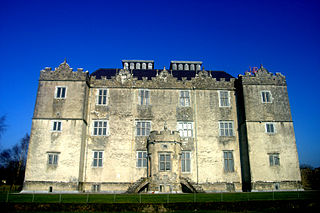 W
WRichard Burke, 4th Earl of Clanricarde was an Irish nobleman and politician. He was the son of Ulick Burke, 3rd Earl of Clanricarde and Honora Burke. Knighted in 1602 for his exploits as leader of the English cavalry during the Battle of Kinsale, he would later serve as Governor of Connaught from 1604 to 1616, and as a member of the Privy Council of Ireland. Having established himself as the largest and most influential landowner in Connacht, his later life was characterized by animosity between him and an increasingly hostile and acquisitive Dublin government.
 W
WUlick MacRichard Burke, 1st Marquess of Clanricarde, 5th Earl of Clanricarde, 2nd Earl of St Albans, was an Irish nobleman who was involved in the Wars of the Three Kingdoms. Lord Clanricarde was a Catholic Royalist, who had overall command of the Irish forces during the later stages of the Cromwellian conquest of Ireland. He was created Marquess of Clanricarde in 1646.
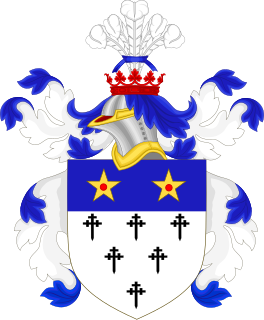 W
WCol. Charles Clinton was an Anglo-Irish soldier and politician in colonial America. A colonel of the French and Indian War, he was the father of General James Clinton and George Clinton, and the grandfather of DeWitt Clinton.
 W
WColonel David Collins was a British administrator of Britain's first Australian colonies.
 W
WCharles Spencer Canning Boyle, 10th Earl of Cork and Orrery, styled Viscount Dungarvan until 1904, was an Irish soldier and peer.
 W
WBrigadier-General William Cosby (1690–1736) was an Irish soldier who served as the British royal governor of New York from 1732 to 1736.
 W
WMaurice FitzThomas FitzGerald, 1st Earl of Desmond in Dublin Castle, Dublin, Ireland was an Irish nobleman in the Peerage of Ireland, Captain of Desmond Castle in Kinsale, so-called ruler of Munster, and for a short time Lord Justice of Ireland. Called "Maurice the Great", he led a rebellion against the Crown, but he was ultimately restored to favour.
 W
WTheobald Dillon, 1st Viscount Dillon, was an Irish military commander and adventurer. He held extensive lands in eastern Connacht and north-western Leinster, some acquired by sharp practices. He was a loyal supporter of Elizabeth I of England in her Irish wars.
 W
WArthur Chichester, 1st Earl of Donegall, was an Anglo-Irish peer and soldier.
 W
WField Marshal Charles Moore, 1st Marquess of Drogheda, styled Viscount Moore from 1752 until 28 October 1758, was an Irish peer and later a British peer, and military officer. He bore the colours of his regiment at the Battle of Culloden in April 1746 during the Jacobite risings and later commanded the 18th Light Dragoons during operations against the Whiteboys in Ireland. He also sat as Member of Parliament in the Irish House of Commons and, having served as Chief Secretary to the Lord Lieutenant of Ireland, he went on to become Master-General of the Irish Ordnance.
 W
WMichael Dwyer (1772–1825) was a United Irishmen leader in the 1798 rebellion. He later fought a guerrilla campaign against the British Army in the Wicklow Mountains from 1798–1803 and in the Glen of Imaal County Wicklow. Michael and his family were Catholics, and he was the eldest of seven children of farmer John Dwyer and his wife Mary, who had a farm in the widespread fields of Wicklow and supplied the men of the rebellion with food. In 1784 the family moved to a farm in Eadestown. Dwyer was a cousin of Anne Devlin, who would later achieve fame for her loyalty to the rebel cause following the suppression of Robert Emmet's rebellion.
 W
WMike Flanagan was a British soldier of Irish birth who assisted the formation of the Israeli armed forces.
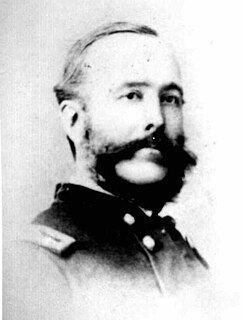 W
WWilliam Gamble was a civil engineer and a United States Army cavalry officer. He served during the Second Seminole War, and fought for the Union during the American Civil War. He commanded one of two brigades in Brigadier General John Buford's Division of Cavalry, in which he played an important role in defending Union positions during the first day of the Battle of Gettysburg.
 W
WJenico William Joseph Preston, 14th Viscount Gormanston,, was an aristocratic Anglo-Irish colonial administrator.
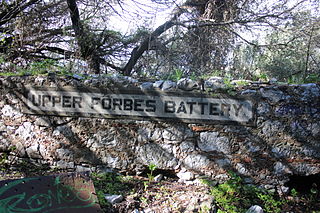 W
WGeorge Forbes, 3rd Earl of Granard PC was an Anglo-Irish naval commander and diplomat. He was at the Capture of Gibraltar. He took a very valuable prize ship and was briefly a Governor of the Leeward Islands. He took a role in politics, helping to end Robert Walpole's career, but eventually retired.
 W
WChristopher Hely-Hutchinson (1767–1826) was an Irish lawyer, politician and soldier.
 W
WRichard Hennessy was an Irish military officer and businessman, best known for founding the Hennessy cognac dynasty, which is today a luxury brand and one of the most prominent in the world. Hennessy was from County Cork, Ireland, and, due to his Jacobite political tendencies, went into exile in France, eventually serving in the French Army.
 W
WSeán Heuston was an Irish republican rebel and member of Fianna Éireann who took part in the Easter Rising of 1916. With about 20 Volunteers, he held the Mendicity Institution on the River Liffey for over two days, though it was originally only intended to be held for 3–4 hours. He was executed by firing squad on 8 May in Kilmainham Gaol. His courtmartial record at Kew spells his name as Hewston J.J..
 W
WJoseph Holt was a United Irish general and leader of a large guerrilla force which fought against British troops in County Wicklow from June–October 1798. He was exiled in 1799 to the colony of New South Wales where he worked as a farm manager for NSW Corp Paymaster Captain William Cox and later returned to Ireland in 1814.
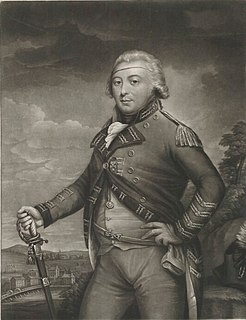 W
WMajor-General Sir Henry Johnson, 1st Baronet, was an Anglo-Irish general in the British Army.
 W
WSir William Johnson, 1st Baronet, was an Irish official of the British Empire. As a young man, Johnson moved to the Province of New York to manage an estate purchased by his uncle, Admiral Peter Warren, which was located amidst the Mohawk, one of the Six Nations of the Iroquois League. Johnson learned the Mohawk language and Iroquois customs, and was appointed the British agent to the Iroquois. Because of his success, he was appointed in 1756 as British Superintendent of Indian Affairs for the northern colonies. Throughout his career as a British official among the Iroquois, Johnson combined personal business with official diplomacy, acquiring tens of thousands of acres of Native land and becoming very wealthy.
 W
WJames Johnston was a general in the British Army.
 W
WBrigadier General Richard Kane (1662–1736) was an Irish soldier who served in the British Army. He is particularly associated with the island of Minorca.
 W
WJames Lawlor Kiernan was an Irish-born Brigadier General in the Union Army during the American Civil War.
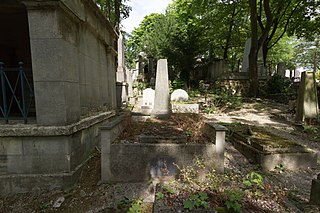 W
WGeneral William Lawless was a Dublin-born surgeon and important member of the Society of the United Irishmen, a revolutionary republican organisation in late 18th century Ireland.
 W
WThomas Dongan, 2nd Earl of Limerick, was a member of the Irish Parliament, Royalist military officer during the English Civil War, and Governor of the Province of New York. He is noted for having called the first representative legislature in New York, and for granting the province's Charter of Liberties.
 W
WJohn MacBride was an Irish republican and military leader executed by the British for his participation in the 1916 Irish Easter Rising in Dublin.
 W
WPhelim Reagh MacDavitt or Phelim Reagh MacDevitt was a Gaelic Irish warrior and landowner notable for his participation in the Nine Years War and later in O'Doherty's Rebellion in 1608. After playing a leading part in the Burning of Derry, he was captured and executed following the Battle of Kilmacrennan.
 W
WRichard Montgomery was an Irish soldier who first served in the British Army. He later became a major general in the Continental Army during the American Revolutionary War, and he is most famous for leading the unsuccessful 1775 invasion of northern Quebec.
 W
WPatrick Theodore Moore was a Confederate States Army brigadier general during the American Civil War. As colonel leading the 1st Virginia Infantry Regiment, he was severely wounded at the Battle of Blackburn's Ford on July 18, 1861 and was incapacitated for further field service. Thereafter, he served as an aide-de-camp, first to General Joseph E. Johnston and then to Lieutenant General James Longstreet, a judge advocate general on court martial duty and a brigade commander of Virginia Reserves in the Department of Richmond. He was a merchant and Virginia militia officer before the war and an insurance agent after the conflict.
 W
WJohn Thomond O'Brien (1786–1861), also known in Spanish as Juan Thomond O'Brien, was an Argentine Army officer born in 1786 in Baltinglass, Co. Wicklow, son of Martin O'Brien and Honoria O'Connor. He fought in the Chilean War of Independence.
 W
WMaurice Fitzmaurice FitzGerald I, 2nd Lord of Offaly was a Norman-Irish peer, soldier, and Justiciar of Ireland from 1232 to 1245. He mustered many armies against the Irish, and due to his harsh methods as Justiciar, he received criticism from King Henry III of England. He was succeeded as Lord of Offaly by his son, Maurice FitzGerald, 3rd Lord of Offaly.
 W
WGeneral Charles O'Hara was a British military officer who served in the Seven Years' War, American War of Independence, and French Revolutionary War, and later served as Governor of Gibraltar. During his career O'Hara personally surrendered to both George Washington and Napoleon Bonaparte.
 W
WJames Butler, 5th Earl of Ormond, 1st Earl of Wiltshire was an Anglo-Irish nobleman and soldier. Butler was a staunch Lancastrian and supporter of Queen consort Margaret of Anjou during the Wars of the Roses. He was beheaded by the victorious Yorkists following the Battle of Towton.
 W
WVice-Admiral Thomas Butler, 6th Earl of Ossory, KG, PC, PC (Ire) (1634–1680) was an Irish soldier and politician. He was born at Kilkenny Castle, the eldest son of James Butler, 1st Duke of Ormond, and his wife Elizabeth Preston.
 W
WLieutenant-Colonel John Henry Patterson,, known as J. H. Patterson, was a British soldier, hunter, author and Christian Zionist, best known for his book The Man-Eaters of Tsavo (1907), which details his experiences while building a railway bridge over the Tsavo river in British East Africa in 1898–99. The book has inspired three Hollywood films – Bwana Devil (1952), Killers of Kilimanjaro (1959) and The Ghost and the Darkness (1996) in which he was portrayed by Val Kilmer.
 W
WMichael Richards (1673-1721) was an Irish military engineer who rose to become Chief Engineer of Great Britain and Surveyor-General of the Ordnance.
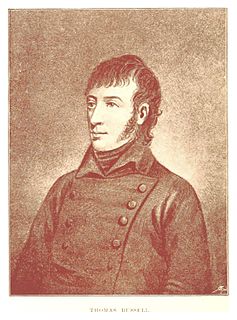 W
WThomas Paliser Russell was a co-founder and leader of the United Irishmen. He was executed for his part in Robert Emmet's rebellion in 1803.
 W
WSir Robert Talbot, 2nd Baronet (c.1610–1670) was an Irish landowner, soldier and politician of the seventeenth century.
 W
WDonogh O'Brien, 4th Earl of Thomond and Baron of Ibrickan was an Irish nobleman and soldier noted for his loyalty to the Kingdom of Ireland. His long-term objective, achieved after decades, was to obtain an official acknowledgment that County Clare, where his possessions were situated, was part of the province of Munster, to free it from the jurisdiction of the Connaught government under which it had been placed.
 W
WField Marshal James O'Hara, 2nd Baron Tyrawley and 1st Baron Kilmaine, PC, was an Irish officer in the British Army. After serving as a junior officer in Spain and the Low Countries during the War of the Spanish Succession, he went on to become British ambassador to Lisbon establishing a close relationship with King John V there. He undertook a tour as British ambassador to Saint Petersburg before becoming Governor of Gibraltar where he set about improving the fortifications. He was briefly commander of British troops in Portugal during the Seven Years' War but was replaced within a few months. During his military career he was colonel of eight different regiments.
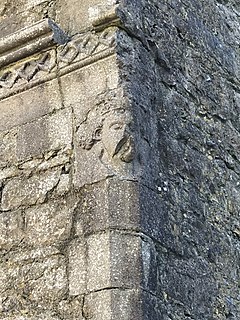 W
WCathal Crobhdearg Ua Conchobair (1153–1224), the youngest son of the Irish High King Tairrdelbach mac Ruaidri Ua Conchobair, was a King of Connacht. His sons Aedh Ua Conchobair and Feidhlimidh Ua Conchobair were Kings of Connacht after him.
 W
WThomas Lowry Young was an American politician from the U.S. state of Ohio. Young, a Republican, served as the 33rd Governor of Ohio from March 2, 1877 to January 14, 1878.